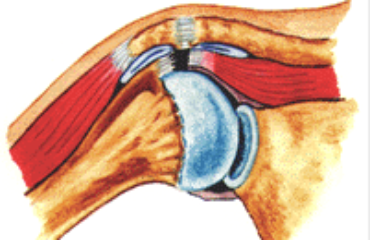What is the AC joint?
Your shoulder is a ball and socket joint that connects the humerus (upper arm bone) to the clavicle (collarbone) and the scapula (shoulder blade). Because of its configuration, you can freely move your shoulder across a wide range of motion. The AC joint refers to the acromioclavicular joint, which is where the clavicle meets the scapula at the bony point called the “acromion”.
What is the injury to the AC joint?
Injury to the AC joint is known as “shoulder separation”. The injury is not in the shoulder (glenohumeral) joint itself, but at the junction of the collarbone and the shoulder blade. When injury occurs, the ligaments connecting the AC joint separate, causing the bones to fall out of alignment with each other. The severity of the injury will vary from mild damage to the ligaments, to a complete tear of ligaments, leading to visible deformity.
There are three grades to the severity of AC joint injury:
- Grade I injury involves minimal damage to the ligaments of the AC joint, with no visible deformity.
- Grade II injury involves stretching to partial tears of the ligaments of the AC joint. The AC joint is painful, particularly when stressed
- Grade III injury involves a complete tear of the AC joint ligaments. The collarbone is no longer tethered to the scapula, leading to a very visible deformity. There is severe pain associated with this grade of injury.
What causes AC joint injury?
The mechanism of action that usually causes separation of the AC joint is a direct fall on the shoulder. The impact of the landing can be strong enough to tear the ligaments that hold the AC joint together. The injury will manifest with pain on the shoulder, and in some cases, a visible deformity caused by the scapula being weighed down by the arm can be seen. This is often a very painful condition, even without visible deformity.
How is AC joint injury diagnosed?
Shoulder separation is diagnosed based on the patient’s medical history and physical examination, which will reveal the typical findings associated with AC joint injury. Additional imaging modalities may be requested in order to  determine the severity of the injury. The usual diagnostics requested are X-rays, Magnetic Resonance Imaging (MRI) and Computerized Tomography (CT) scans.
determine the severity of the injury. The usual diagnostics requested are X-rays, Magnetic Resonance Imaging (MRI) and Computerized Tomography (CT) scans.
What is the treatment for AC joint injury?
The initial treatment of AC joint injury should be to immediately stabilize the joint. This can easily be accomplished by placing the shoulder and arm in a sling, immobilizing the joint. Cold compress with ice packs is recommended every two to three hours in order to minimize the swelling and pain of the injured shoulder.
Shoulder separation is usually managed conservatively, with surgery reserved for the most severe of injuries. Immobilization is required at the beginning, although it is recommended that the shoulder and arm undergo a program of physical therapy and rehabilitation to best return to normal function. Treatment with medications such as non-steroidal anti-inflammatory drugs (NSAIDs) will relieve pain and inflammation. Recovery may take anywhere from several weeks to months after the injury.


